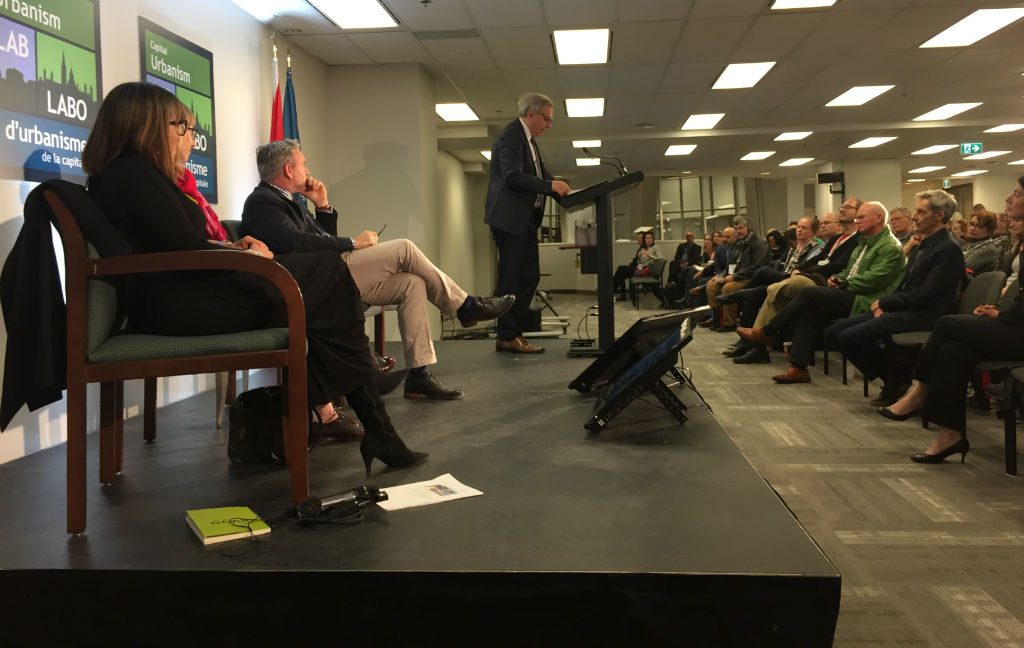History of heritage conservation called key to future protection
By Mazen Abouleata
Protecting Canadian heritage in the upcoming 50 years will only happen by looking back at heritage preservation in the 1960s, said conservation experts who spoke at the NCC’s recent “Heritage, Circa 1967” lecture.
The talk was the second in the NCC’s latest Capital Urbanism Lab series, a monthly lecture program in which leaders, experts and the public can “share knowledge and ideas about how to build a great capital.”
Mark Kristmanson, CEO of National Capital Commission, said the Oct. 11 lecture revolved around “the legacies, mistakes, and lessons of 1967 that will help us preserve heritage in the next 50 years.”
Guest speaker Andrew Waldron, heritage conservation manager at Brookfield Global Integrated Solutions, raised the issue of heritage destruction in the years before 1967, Canada’s 100th anniversary. He said the demolition of Canadian heritage landmarks and historic communities, — including the razing of the LeBreton Flats working-class neighbourhood in 1962 — happened under the Gréber plan, which he described as a “powerful” urbanizing blueprint for the national capital that did not, however, aim to preserve the capital’s heritage.
“Aside from preserving the Rideau Canal, there was no interest in conserving other built heritage,” Waldron said of the 1950 plan spearheaded by French landscape architect Jacques Gréber, which was a seminal document in the evolution of the NCC itself.
Waldron stated that 1967 was the beginning of how urban renewal would mark a change from demolitions to conservation. He referenced the renovation of an iconic coffee shop on Sussex Drive.
“At 521 Sussex Drive,” Waldron said, “a local architect converted the NCC-owned building, while retaining the interior features, into a music venue called Le Hibou coffee house, the very place where youth culture congregated to listen to poets and musicians.”
During the Q&A session, John Cox, former senior planner at the NCC in 1962, brought an undiscussed topic to the stage. He asked about the “extent in which we think about the culture and lifestyle” of Indigenous peoples when considering heritage issues. He said it takes years to see a noticeable change towards preserving Indigenous culture.
“That’s one of the things that I’ve noticed with being in this field for so long: it takes 50 years before you start to see change that makes sense,” Cox said later in an interview.
Heather Thomson, manager of NCC’s heritage program, responded that the NCC is creating close ties with Indigenous communities to make progress on the issue.
“The NCC is working closely with the Algonquin communities to try to work and change that,” said Thomson.
The speakers also discussed the NCC’s 50-year plan for Canada’s capital, which aims to renovate and conserve Canadian heritage in the decades leading up to 2067, Canada’s 200th anniversary.
The plan is intended build on the work of 20th-century planners. One of its central themes, the plan notes, is creating an “inclusive and meaningful” capital that preserves its heritage.
The plan envisions “an inclusive and meaningful capital that preserves and cherishes national symbols, while respecting Indigenous heritage.”
Susan Macdonald, head of Getty Conservation Institute and another speaker at the event, emphasized the significance of looking at Canada’s history of heritage preservation. She said Canadians can shape a better future if they can understand the lessons from the past.
“Heritage is vital,” she said, “to the future of our cities and urban environments.”

